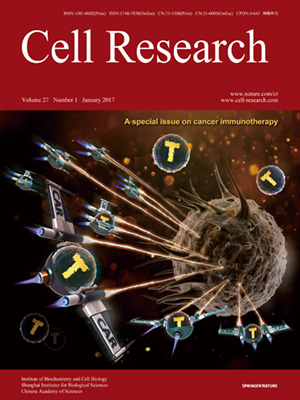
Volume 27, No 1, Jan 2017
ISSN: 1001-0602
EISSN: 1748-7838 2018
impact factor 17.848*
(Clarivate Analytics, 2019)
Volume 27 Issue 1, January 2017: 147-150 | Open Access
LETTERS TO THE EDITOR
Structural basis for blocking PD-1-mediated immune suppression by therapeutic antibody pembrolizumab
Zhenkun Na1, Siok Ping Yeo2, Sakshibeedu R Bharath1, Matthew W Bowler4,5, Esra Balıkçı1, Cheng-I Wang2 and Haiwei Song1,3
1Institute of Molecular and Cell Biology, 61 Biopolis Drive, Singapore 138673, Singapore
2Singapore Immunology Network, 8a Biomedical Grove, Singapore 138648, Singapore
3Department of Biochemistry, National University of Singapore, 14 Science Drive, Singapore 117543, Singapore
4European Molecular Biology Laboratory, Grenoble Outstation, 71 avenue des Martyrs, CS 90181 F-38042 Grenoble, France
5Unit of Virus Host-Cell Interactions, Univ. Grenoble Alpes-EMBL-CNRS, 71 avenue des Martyrs, CS 90181 F-38042 Grenoble, France
Correspondence: Haiwei Song, Tel: +65 65869700 E-mail: haiwei@imcb.a-star.edu.sg; Cheng-I Wang, Tel: +65 64070083(Wang_ChengI@immuno.a-star.edu.sg)
PD-1 is a type I immune inhibitory transmembrane receptor of the CD28 family that modulates the activity of T cells in peripheral tissues1. It is expressed in T cells, B cells, monocytes, natural killer cells and many tumor-infiltrating lymphocytes2. Binding of PD-1 to its ligands PD-L1 and PD-L2 reduces T-cell activity3.
10.1038/cr.2016.77
FULL TEXT | PDF
Browse 2939


